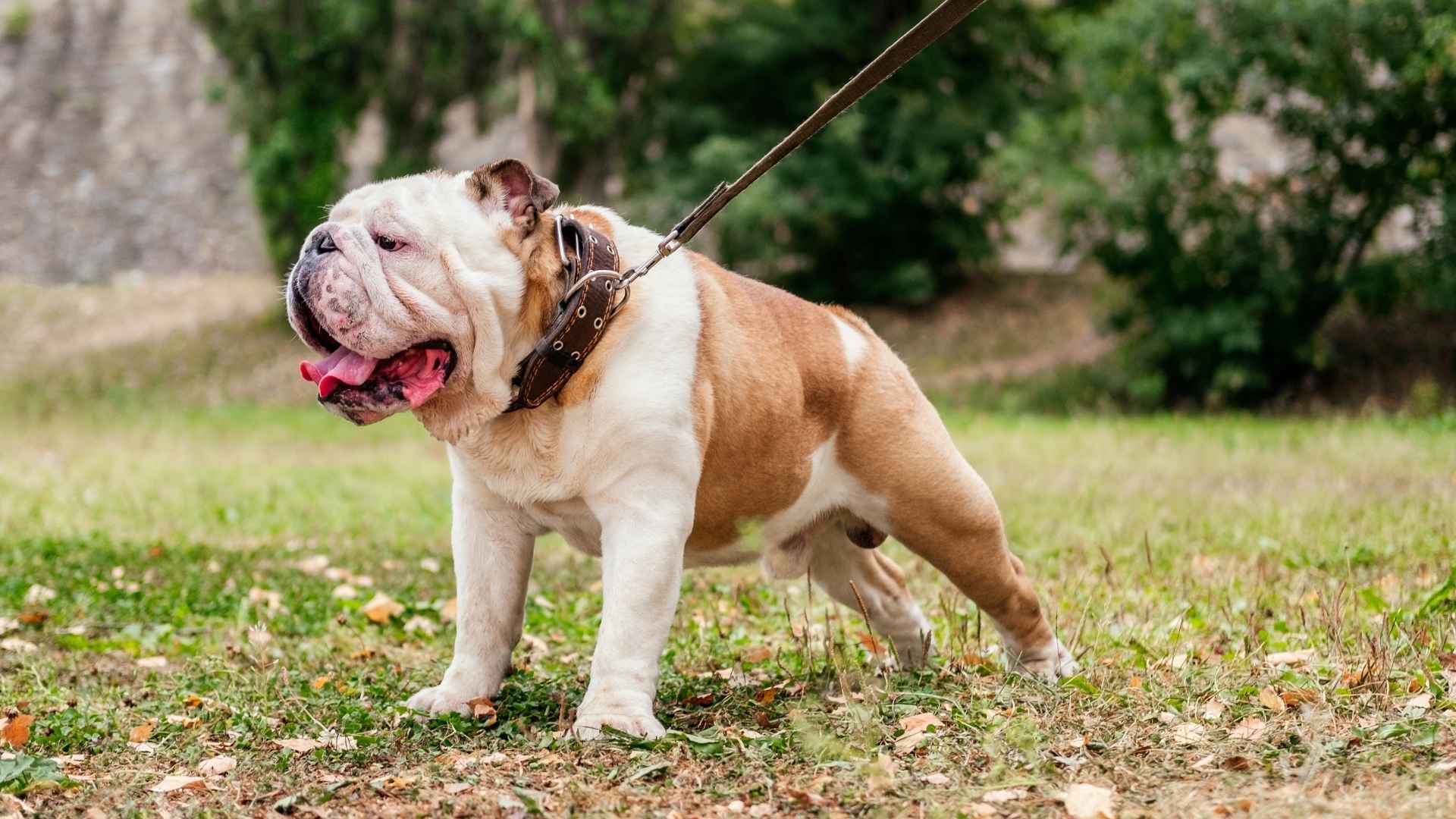Some dogs live to please. Others… live to challenge your patience. While many breeds happily respond to commands with wagging tails and eager eyes, a few prefer to march to the beat of their own drum. These dogs are intelligent, often charming, and fiercely independent—but they aren’t exactly known for their obedience.
These breeds are celebrated not just for their striking looks and unique personalities but also for their stubborn streaks. Training them isn’t impossible—it just takes extra time, creativity, and patience.
They aren’t misbehaving out of malice; they’re simply wired to think for themselves. These are dogs with strong wills and curious minds, often described as “too smart for their own good.”
If you’re drawn to the challenge of raising a rule-breaker with charm, this guide is your roadmap. We’ll explore the most famously defiant dog breeds and how to coexist, train, and thrive with them.
Dog Breeds That Prefer Not To Follow Rules
1. Basenji
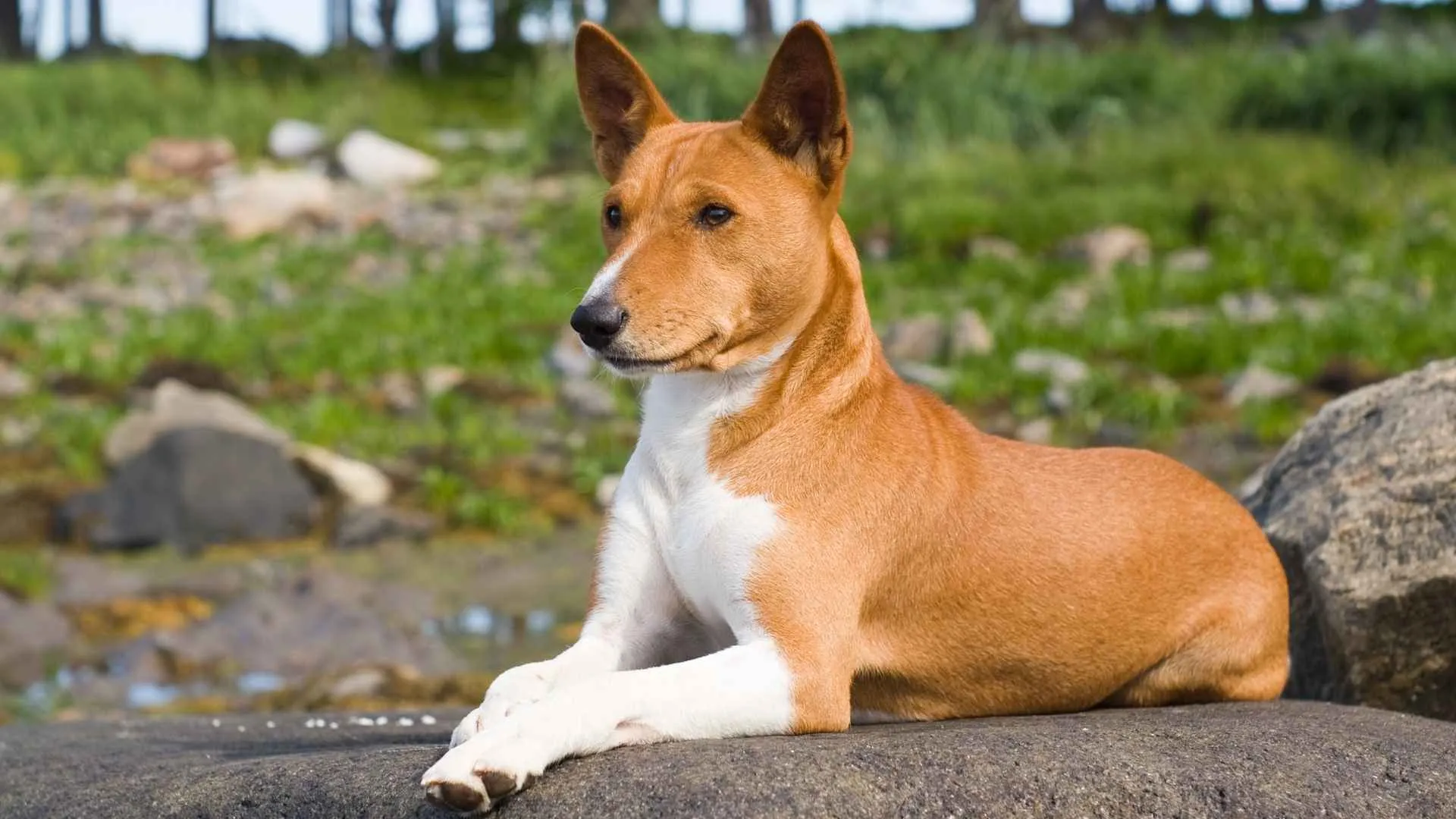
Known as the “barkless dog,” the Basenji hails from Central Africa and belongs to the Hound group. AKC says Basenjis are small and elegant hounds that stand about 16 to 17 inches tall at the shoulder. This ancient breed weighs between 22 to 24 pounds, and lives an average of 12 to 16 years.
Basenjis are compact, sleek, and agile with tightly curled tails and expressive, almond-shaped eyes. Their short, low-maintenance coats make them an appealing choice for neat owners, especially since they groom themselves with feline precision.
While many dogs aim to please, Basenjis prefer to evaluate your commands before considering compliance. Their independent mindset, combined with sharp intelligence, means they’re not easily swayed by basic commands or repetitive routines. They respond better to engaging tasks, varied routines, and reward-based training.
High energy and an active prey drive make this breed unsuited for off-leash adventures. Without daily stimulation, they can become mischievous or destructive out of sheer boredom. Still, their quirky, clownish personality and strong bond with family members win many hearts.
Key Traits:
• Extremely intelligent but highly independent
• Doesn’t bark but produces a signature “yodel”
Fact: Ancient Libyan cave art dating back to 6000 BCE depicts Basenji-type dogs alongside humans during hunts.
2. Beagle
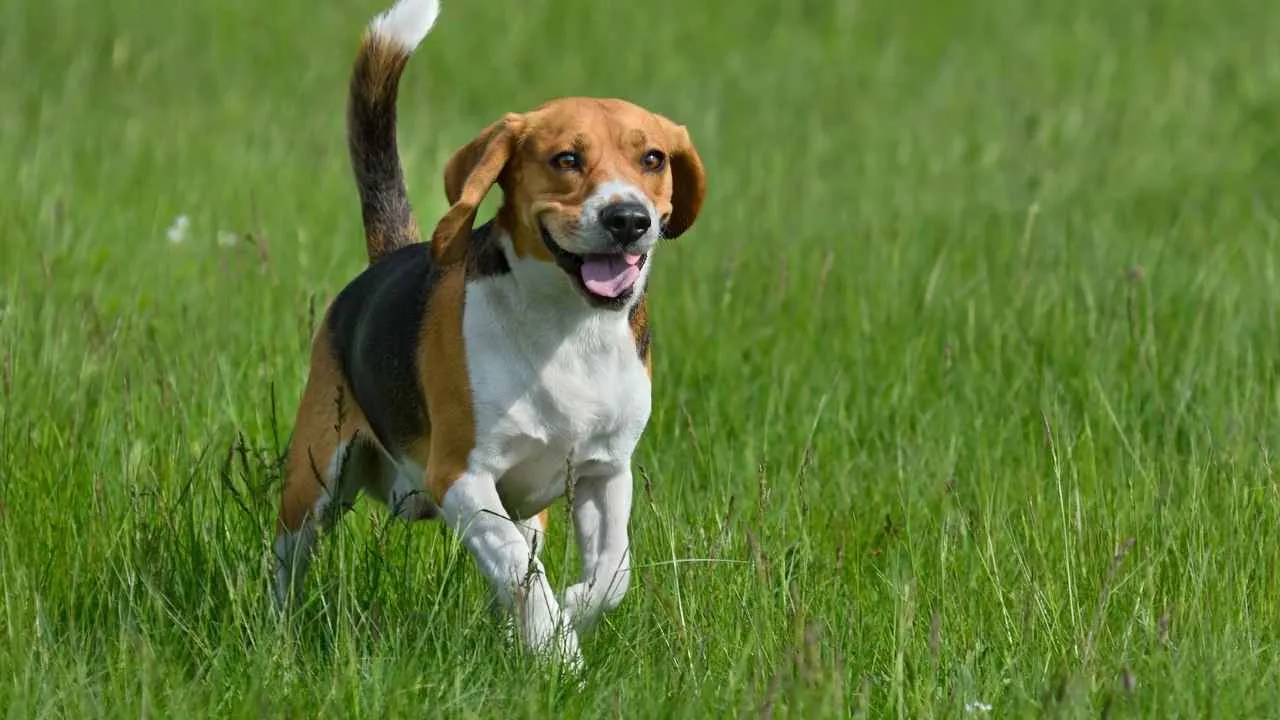
Cheerful, compact, and full of curiosity, the Beagle is a classic scent hound that’s been stealing hearts for centuries. Originally bred for hunting in packs, Beagles are known for their incredible noses, lively temperament, and irresistible charm.
They typically stand 18–20 inches tall and live 12 to 15 years. PetMD says that regardless of their size, an adult Beagle should not weigh more than 30 pounds. Classified under the Hound group, this breed is admired for its expressive eyes, long ears, and merry personality.
Training a Beagle can be tricky. With a high level of stubbornness and a laser-sharp scent drive, they’ll often prioritize a mysterious smell over your commands. While they’re friendly and social, their independent mind means owners must employ patient and creative training methods.
At home, they’re wonderful family pets. Beagles get along well with children and seniors alike, bringing boundless joy with their wagging tails and animated presence. But without mental stimulation and exercise, they may grow bored—and mischievous.
Due to selective breeding, Beagles are prone to certain health conditions such as epilepsy, hypothyroidism, and disc disease. Prospective owners are encouraged to seek health-screened puppies from reputable breeders.
Key Traits:
Beagles are scent-driven and tend to follow their noses rather than your commands. This makes them easily distracted and often oblivious to recall.
Despite their stubborn streak, Beagles are incredibly friendly and great with kids and other pets, making them one of the most popular family dogs.
Fact: Beagles’ strong scent drive often causes them to ignore calls, making leash training essential.
3. Bulldog
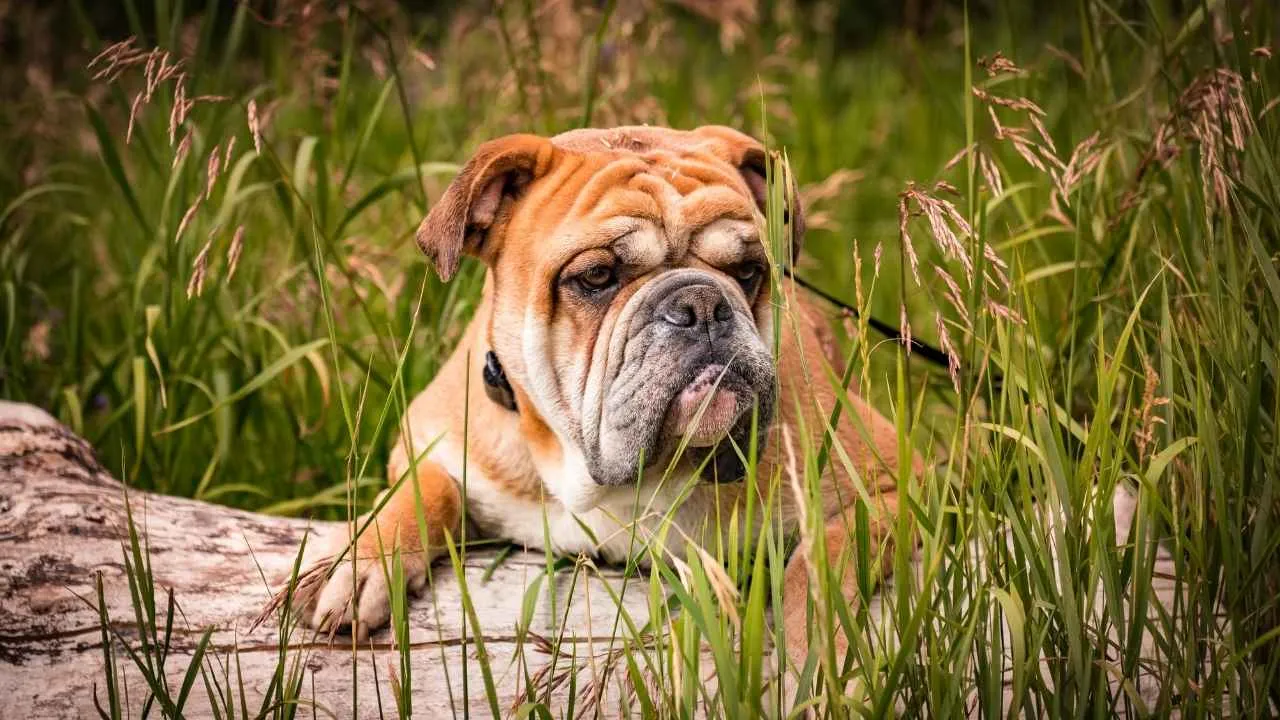
The Bulldog, also known as the English Bulldog, is a medium-sized breed originally developed for the now-outlawed sport of bull-baiting. WebMD says they are powerful dogs with short, muscular, and sturdy legs.
Standing around 14–15 inches tall and weighing roughly 40–50 pounds, this iconic breed is easily recognized by its stocky build, wrinkled face, and flattened nose.
Bulldogs belong to the Utility group, which includes dogs bred for specific tasks that don’t fit traditional working or sporting categories. They typically live between 8 to 10 years.
Despite their slow-moving, couch-loving persona, Bulldogs possess an undeniably stubborn temperament. They often respond to commands at their own pace—if at all—making training a lesson in patience.
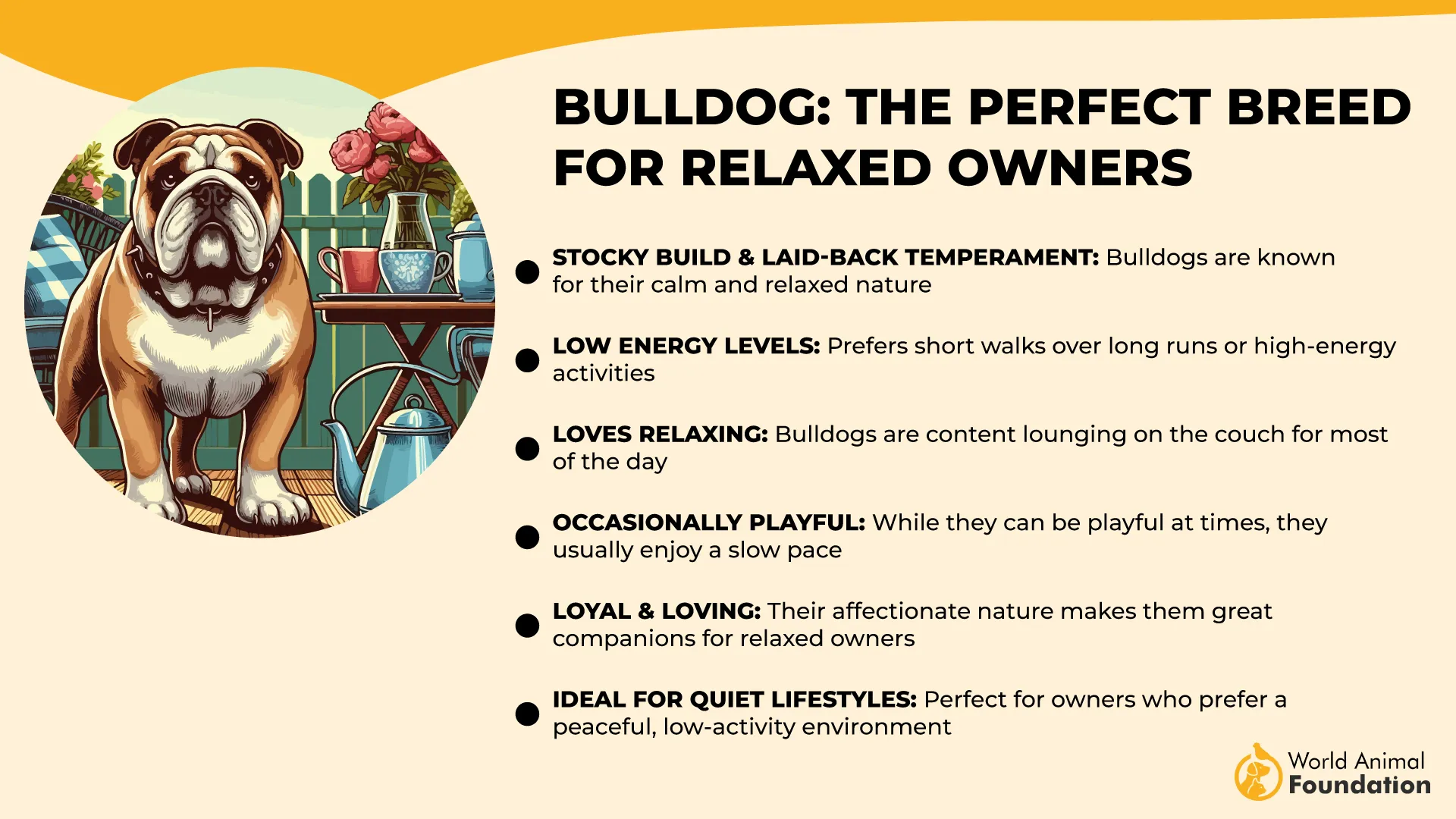
While their relaxed attitude suits low-energy households, their strong-willed nature means they need consistent, reward-based training sessions that are brief and engaging.
This breed is affectionate and loyal, but its physical build demands attentive care. Their flat faces make them prone to breathing issues, while their skin folds must be cleaned daily to prevent infections. Owners should be mindful of the breed’s susceptibility to health complications tied to their extreme features.
Key Traits:
Maintenance Needs: Moderate
Ideal For: Laid-back owners with a sense of humor
Stubbornness Level: Sky-high
Fact: Bulldogs are severely brachycephalic, making them vulnerable to multiple health problems related to their facial structure.
4. Dachshund

Nicknamed the “wiener dog” for its elongated frame and short legs, the Dachshund (or Doxie) is instantly recognizable and endlessly charismatic. Bred in 18th-century Germany to hunt badgers, their name literally translates to “badger dog.”
With standard types standing 8–9 inches tall and weighing 16–32 pounds, and miniature versions under 11 pounds and about 5–6 inches high, they pack a surprising amount of personality into a compact body. Doxies are part of the Hound group and typically live 12–16 years.
Their floppy ears help shield the inner ear while navigating dense brush, and their curled tails were designed to remain visible to hunters. But these design traits come with a bold, tenacious spirit that makes training a true challenge. Their brave nature often leads them to ignore commands if they’re not convinced it benefits them.
Though lively and fun, Dachshunds demand firm, patient handling and benefit from consistent routines. Despite their size, they need regular exercise and mental stimulation. Health-wise, they’re prone to spinal issues like intervertebral disc disease, especially due to their long backs.
Key Traits:
Curious, clever, and bold
Can be playful and affectionate with family
Fact: Dachshunds were bred to be fearless hunters of dangerous prey, which helps explain their stubborn, headstrong behavior today.
5. Akita
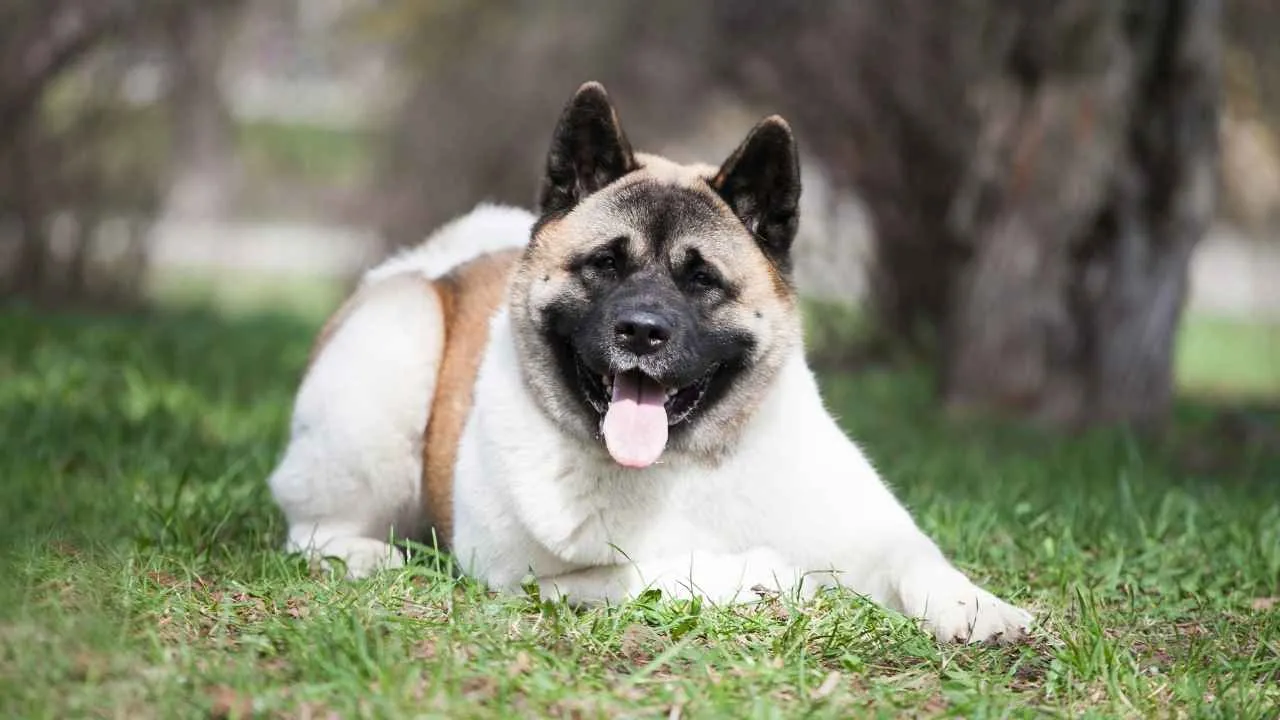
Hailing from the mountainous regions of Japan, the Akita is a large working dog originally bred for big game hunting. This breed stands tall at 26 to 28 inches for males and 24 to 26 inches for females, with males weighing up to 130 pounds.
Recognized for their dense double-layered coat, curled tail, and bold expression, Akitas display a commanding presence and are part of the Working Group. Their life expectancy ranges from 10 to 13 years.
Akitas are fiercely loyal and deeply affectionate with their owners, but remain naturally aloof or even suspicious around strangers. Their independent temperament often resists standard obedience routines, making them more suited for experienced handlers. Early socialization is vital, especially in homes with other pets or young children.
Though they resemble oversized teddy bears, these dogs have a no-nonsense personality. They require structured training and consistent leadership. Their stubbornness can manifest as selective listening or full-on disregard for commands, especially when their trust hasn’t been earned.
Due to genetic predispositions, Akitas are prone to several health conditions such as hip dysplasia, autoimmune diseases, and eye disorders. Responsible breeding and health screening are essential for long-term well-being.
Key Traits:
Loyal and Protective: Akitas are deeply loyal to their families and often form strong, lasting bonds with one person.
Reserved with Strangers: Naturally aloof and dignified, Akitas do not readily warm up to unfamiliar people.
Fact: Akitas possess a recessive gene that occasionally results in long-coated individuals.
6. Rottweiler
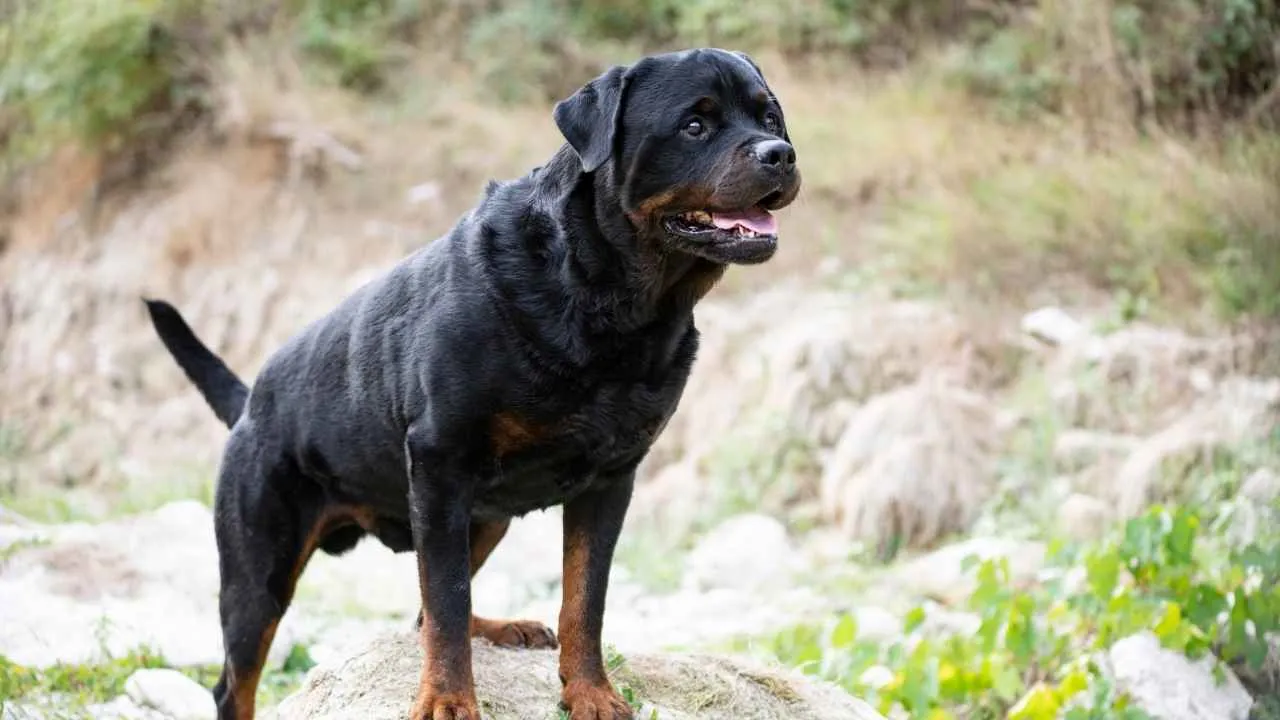
The Rottweiler, often referred to as a “Rottie,” is a large and imposing working breed originally developed in Germany to drive cattle and guard property. Standing 22 to 27 inches tall and weighing between 80 to 135 pounds, these muscular dogs belong to the Working Group and live around 9 to 10 years.
Their broad heads, deep chests, and signature black-and-tan coats give them a commanding presence. Behind their powerful build lies intelligence, loyalty, and a sometimes headstrong nature.
While they are quick learners, Rottweilers don’t always yield to commands without good reason. Their independent streak, rooted in their guarding history, can show up as resistance to training if they sense hesitation or inconsistency in leadership.
That’s why confident, experienced owners are essential to bring out their best behavior. Socialization and obedience training should begin early and remain consistent.
These dogs thrive when given a job—whether it’s protection, sport, or structured companionship. Their large appetite makes them responsive to food-based training, but their sheer strength demands firm boundaries. Without guidance, their confidence can turn into stubbornness, making them one of the breeds that test your authority.
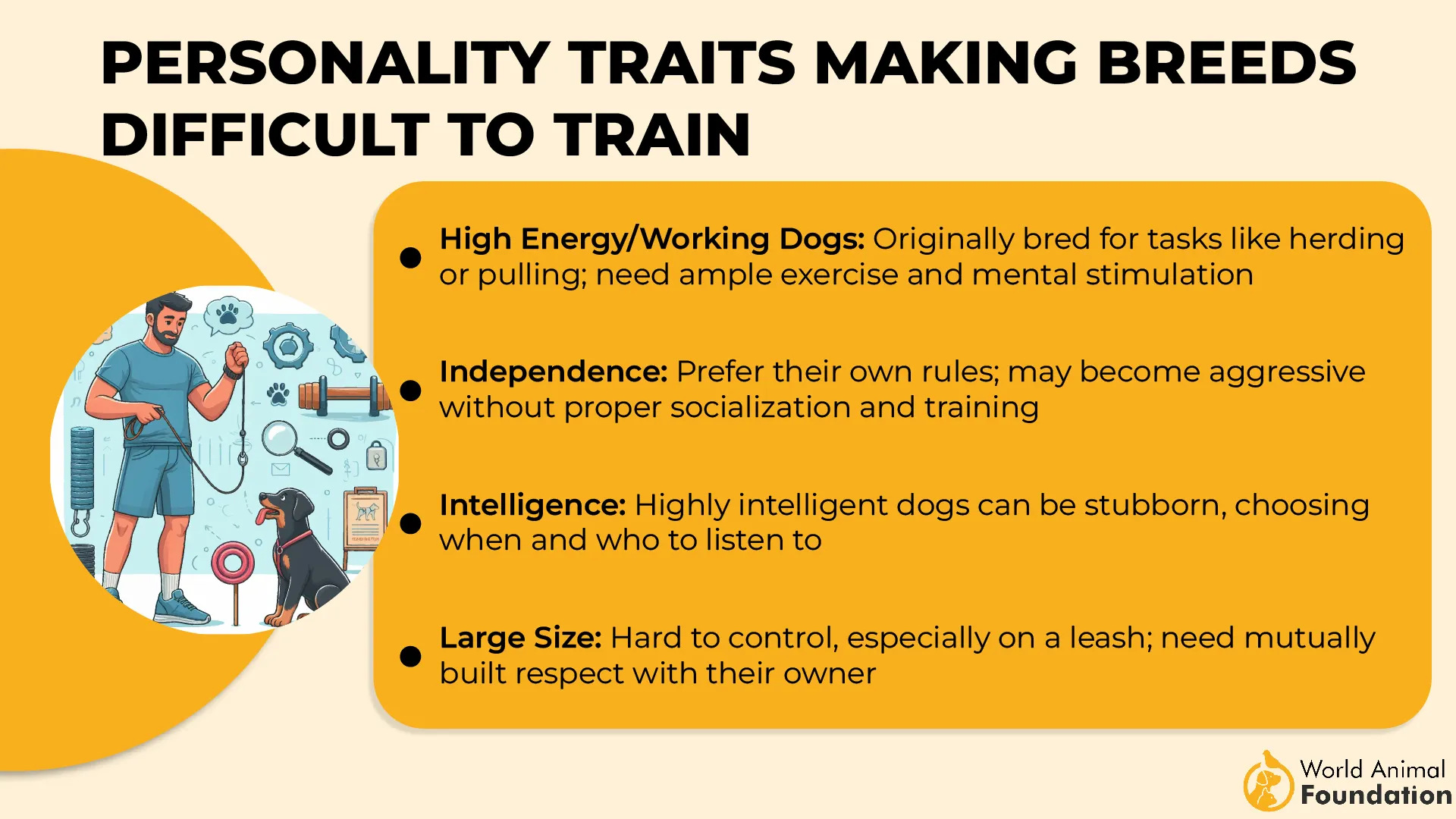
Key Traits:
Confident and Strong-Willed: Naturally self-assured, Rottweilers often test boundaries if their handler isn’t consistent.
Highly Intelligent but Selective: Quick to learn, though they may ignore commands if they sense weak leadership.
Protective Instincts: Their guarding heritage makes them independent decision-makers, sometimes overriding training.
Fact: Rottweilers are genetically prone to certain health issues, including heart problems, hip and elbow dysplasia, and aggressive bone cancers like osteosarcoma.
7. Jack Russell Terrier
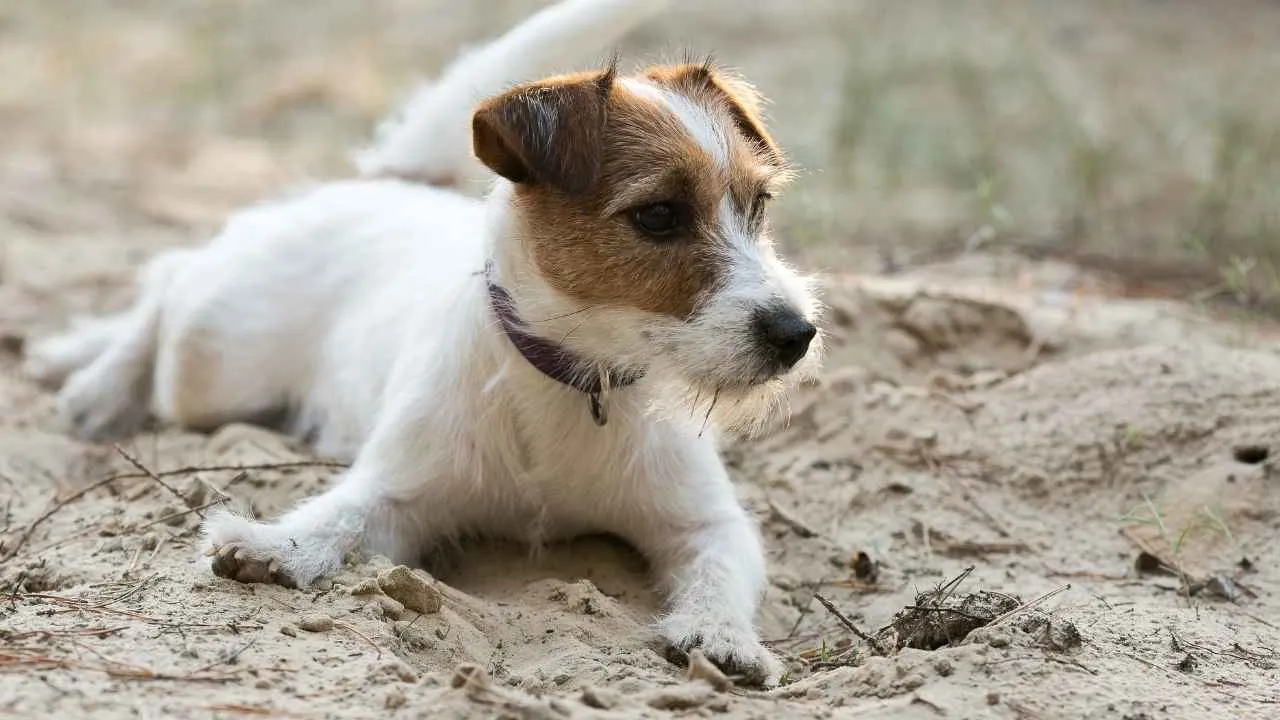
Also known as the Parson Russell Terrier, the Jack Russell Terrier is a compact, feisty breed originally developed in 19th-century England for fox hunting.
Standing about 13–14 inches tall and weighing 13–17 pounds, this little dynamo is bursting with energy and independence. With a lifespan of 13 to 16 years, Jack Russells belong to the Terrier group and are known for their expressive eyes, athletic build, and bold personality.
This breed is not just energetic—it’s famously stubborn. Jack Russells often prefer to think for themselves rather than follow commands, especially if the activity doesn’t excite them. Their intelligence and curiosity can be both delightful and difficult, making early socialization and frequent, focused training sessions essential.
Jack Russells are loyal companions but need engagement to stay out of trouble. Their zest for life means they’ll often invent their own games if you don’t provide structured outlets. Positive reinforcement and puzzle toys can help channel their mental sharpness productively.
Key Traits:
Energy Level: High
Personality: Fearless, loyal, and sharp-witted
Stubbornness: High
Ideal Training: Short, reward-based sessions
Fact: Originally bred for fox hunting, Jack Russells are now known for mastering tricks and thriving on independence.
8. Shiba Inu
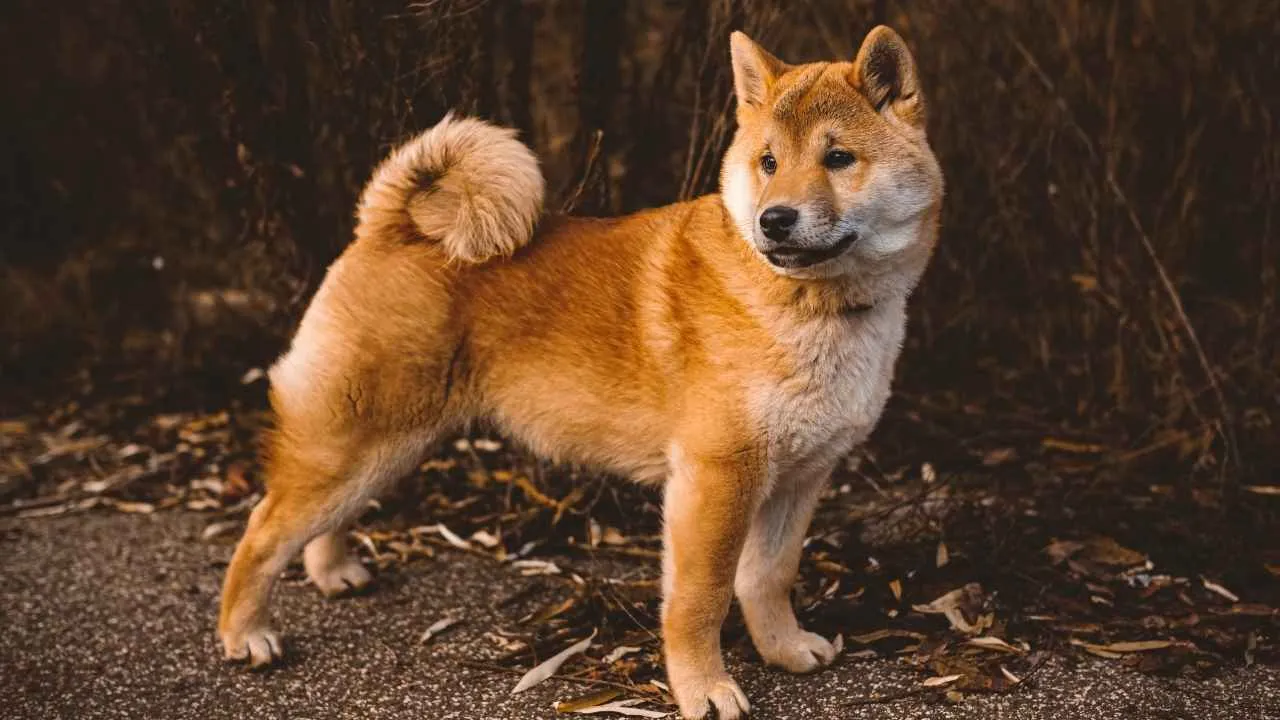
The Shiba Inu is Japan’s most beloved companion dog, known for its compact build, muscular frame, and fox-like features. Standing 13 to 16 inches tall and weighing between 17 and 23 pounds, this ancient breed was originally used for hunting small game in mountainous terrain.
With a life expectancy of 12 to 15 years, the Shiba belongs to the Non-Sporting group and is recognized for its sharp, alert expression and plush coat in shades of red, sesame, or black and tan.
What makes the Shiba Inu stand out most is its stubborn nature. These dogs have a mind of their own and rarely respond well to traditional training.
They require confident, patient handlers and engaging activities that challenge their intelligence. Their disobedience isn’t due to a lack of smarts—they’re simply too clever to follow without a reason.
Despite their headstrong ways, Shibas form strong attachments to their families. Their bold, cat-like independence means they often prefer their own space, but with consistent effort, they can become affectionate, playful companions.
Key Traits:
Energy Level: High
Personality Traits: Alert, loyal, strong-willed
Fact: The Shiba Inu is currently the most popular dog breed in Japan and was only introduced to the U.S. about 60 years ago.
Conclusion
While most dogs are eager to please, some breeds simply prefer their own way. These independent-minded pups, like the ones discussed in this article, aren’t disobedient by accident—it’s just part of their nature. Understanding a dog’s tendency toward stubbornness is key to building trust, setting boundaries, and shaping behavior. With early training, positive reinforcement, and plenty of patience, even the most headstrong companions can thrive as loyal, well-adjusted pets.
Of course, there are other dogs not covered here that also display similar traits. Breeds like Chow Chows, Irish Wolfhounds, and the majestic Great Pyrenees are known for their independence and occasional aloofness.
Some were bred to guard livestock or hunt large game, which naturally calls for strong instincts and decision-making. These dogs often require consistent exercise, clear leadership, and a watchful eye when interacting with other animals. Whether covered in a thick coat or standing tall in confidence, stubborn breeds challenge owners in the best way—by demanding understanding and respect.


